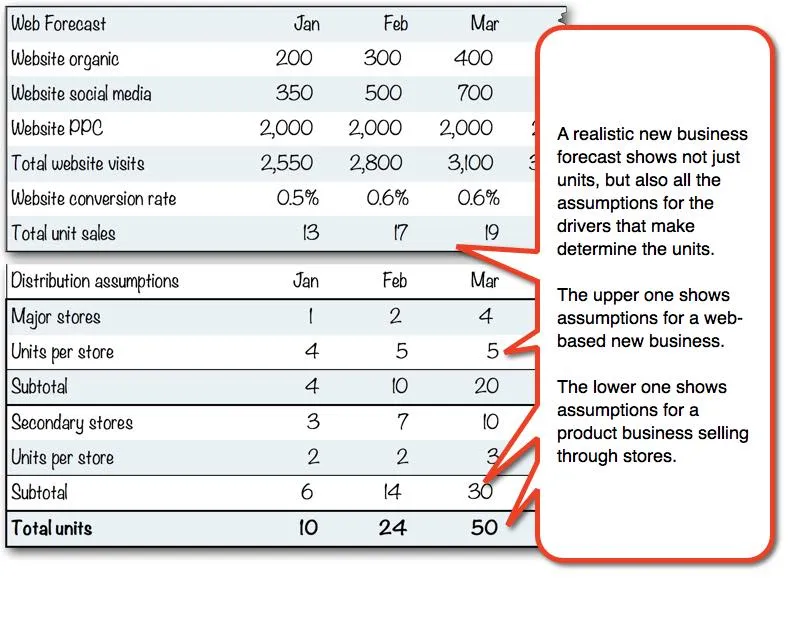This is the second of two parts. The first was What Makes an Ongoing Business Forecast Realistic. I’ve written before about about why to forecast basic business numbers and how to forecast better. I write about the value of realistic forecasting in those posts and others. So for these two posts I want to address what makes a forecast realistic. How can we tell? What do we look for?
I separated this into two parts because they are so different. For established businesses, realism is boosted by past results. For new businesses, however, there are no past results. Realism is a matter of transparent assumptions and comparisons to similar situations.
What we all want to avoid, for new business forecasts, is the complaint that comes up way too often: “How can I forecast a new product if I don’t have past data?” That’s not a reason to not forecast. A new business needs a forecast even more than an established business, because the uncertainty level is higher, and the risks are higher. So just because it’s hard doesn’t mean you can’t do it. Millions of others have done it before you.
Focus on sales drivers
Most businesses have some key factors that drive sales. It might be traffic, channels, stores, leads, pipeline, or something else. A realistic sales forecast breaks down into drivers. Here are two examples.
- A sales forecast for a subscription-based web business that shows estimated web traffic and conversion rates looks more realistic than one that just shows subscriptions as if they came from nowhere. And another increase in realism is to breaks traffic into sources of traffic, such as organic search placement, pay-per-click advertising, and email marketing.
- A sales forecast for a product business selling through traditional retail channels might include estimates of stores carrying the item, and monthly unit sales per store. It might be even more realistic if it breaks the monthly sales assumptions into categories of stores.
These examples are illustrated below.

Realistic assumptions make realistic forecasts
Even new products and new businesses follow established patterns. Modern technology gives us enormous resources for educating our guesses, even on new things, by what’s normal for existing things.
For example, that web business doing the sales forecast above can find out, with some web searches, what might be normal expectations for traffic for new sites, as a function of factors like type of site, type of business, and marketing budget. And that product business ought to be able to find data on sales per store for some existing products.
A new business forecast can anchor its assumptions with data from existing businesses. When a key assumption for something new is based on actual results for something similar, that adds credibility.
With expenses, too, new businesses can find a lot of data. Average salaries by job type, for your market, are available. Average marketing spending, for your type of business, as a percent of sales, is available for most businesses. Average square feet of office space per person, for your type of business or one similar to yours, is something you can research and estimate. Average rents for office space, or retail location, by type of location and square footage, are available.
Review and revise often
Remember, forecasts aren’t supposed to hold up to time. Forecasts are meant to be reviewed often, and revised. The point isn’t accurately guessing the future; it’s getting information you can use to manage.

